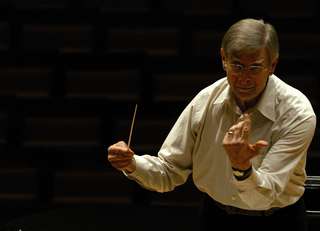|
Back
91 Years Young at the New York Philharmonic New York
David Geffen Hall, Lincoln Center
02/28/2019 - & March 1*, 2, 2019
Edvard Grieg: Peer Gynt (Suite No. 1), Op. 46 – Piano Concerto in A minor, Op. 16
Antonín Dvorák: Symphony No. 8 in G major, Op. 88
Jean-Yves Thibaudet (piano)
New York Philharmonic Orchestra, Herbert Blomstedt (conductor)

H. Blomstedt (© Martin U. K. Lengemann)
Guest conductors come and go at the New York Philharmonic, but a performance led by the nonagenarian Herbert Blomstedt makes musical New York stand up and notice. A fine conductor for his entire career, which began in the 1950s and involved leading no fewer than ten orchestras (including the Dresden Staatskapelle, the Leipzig Gewandhaus, and the San Francisco Symphony), Blomstedt is now 91 years young and still brings an extraordinary energy to performances under his baton. A devout Seventh Day Adventist, he will not rehearse on that faith’s sabbath days – Fridays and Saturdays – but gladly performs on those days because he regards musical performance as a religious vocation.
On this Friday night, it really showed. The music of Norway’s national composer Edvard Grieg is not the most exciting in the repertoire, but it has enough German-trained Romantic pathos to stir the imagination. Thanks to cartoons, we normally associate the Peer Gynt Suite with a bucolic idyll (in which Elmer Fudd hunts, if memory serves), but in fact it was composed as incidental music to Henrik Ibsen’s eponymous play, about the life of an aimless fool whose nonexistence leads only to meaningless death. Especially strong in the woodwinds, it coursed melodically through episodes in its protagonist’s life. Followed up by the composer’s pleasant Piano Concerto, Blomstedt led a tight performance to accompany the reliable French pianist Jean-Yves Thibaudet, who played with an elegance and refinement that deserved all the applause it received. Watching his fingers dance over the keyboard was mesmerizing.
The evening concluded with Anton Dvorák’s Eighth Symphony, a stormy work that never equaled the popularity of the “New World” Symphony that followed. But Blomstedt’s meticulous reading coursed through its movements with aplomb. We should wish him many more years.
Paul du Quenoy
|